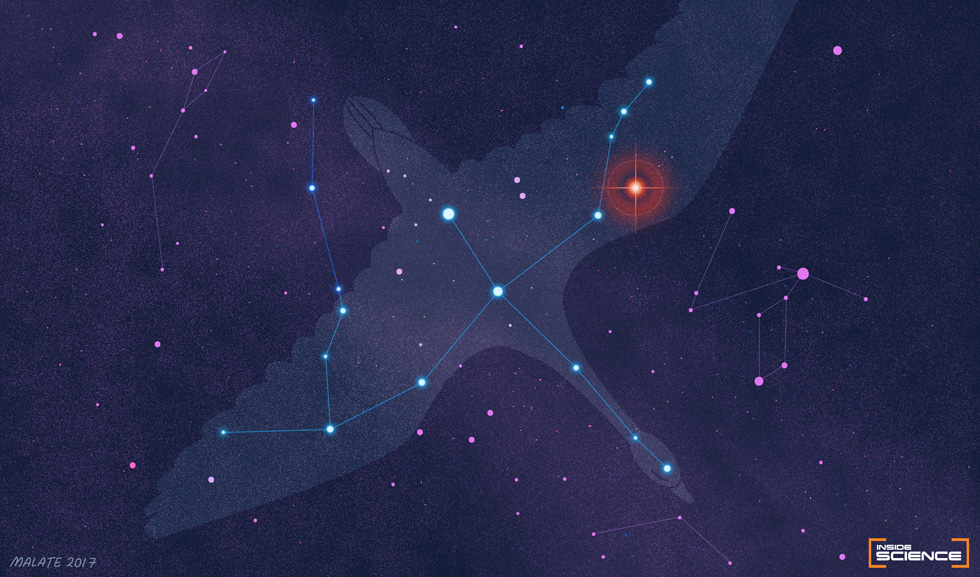Scientists Predict a New Star Will Appear in 2022

The predicted explosion will appear in one of the wings of the constellation known as Cygnus.
Copyright American Institute of Physics (reprinting information)
(Inside Science) -- Calling all amateur astronomers -- mark your calendars for 2022, give or take a year. That's when two orbiting stars near the swan-shaped constellation Cygnus are set to merge and then explode, creating a new point of light in the night sky, which is expected to be as bright as the North Star for up to six months.
It's the first time scientists have been able to predict such an explosion and it happened with the help of a little serendipity. Astronomer Larry Molnar, from Calvin College in Grand Rapids, Michigan, and his students became intrigued with a star known as KIC 9832227 after hearing a talk at an astronomy conference, according to a press release. KIC 9832227, which is about 1,800 light-years away from Earth, kept changing brightness, and close observations revealed that the star was actually two stars orbiting one another so closely their outermost layers touch.
The researchers calculated how long it took the stars to circle each other, and realized the orbit time was getting shorter. The data closely matched that of another star system, V1309 Scorpii, which exploded in 2008.
Molnar's team thinks KIC 9832227 will follow the same path, producing a "red nova" stellar explosion that will briefly make the system 10,000 times brighter. The "guest star" will have a reddish tint and will appear in a wing of the constellation Cygnus, a swan-shaped collection of stars that grace the northern sky in summer and autumn.
Molnar presented the findings Jan. 6 at a meeting of the American Astronomical Society, in Grapevine, Texas.

